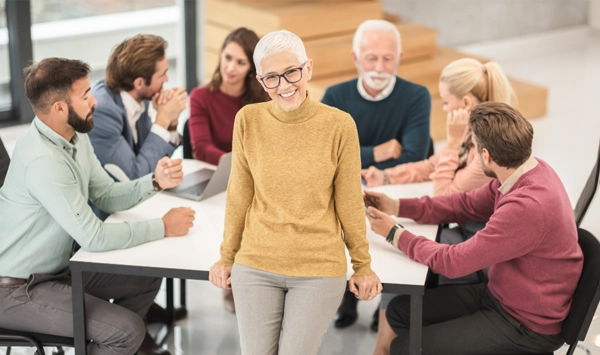Most businesses today rely heavily on digital infrastructure, making it crucial to stay ahead of cybersecurity threats. In this blog post, we will unveil a foolproof plan to secure your business with the latest cybersecurity trends. For more detailed information on protecting your business, check out blog post on 5 Fool-proof Steps to Stay Safe from Cybersecurity Threats.
Establishing the Basics of Cybersecurity
Assessing Your Current Cybersecurity Posture
Posture. The first step in securing your business against cyber threats is to assess your current cybersecurity posture. This involves evaluating the existing security measures in place, identifying vulnerabilities, and determining the level of risk your business faces. Conducting a thorough assessment will help you understand where your defenses are strong and where they may be lacking.
Posture. By conducting regular cybersecurity posture assessments, businesses can stay proactive in identifying and addressing potential security weaknesses. It is imperative to keep up with the evolving threat landscape and continuously reassess your cybersecurity posture to ensure your defences are robust and up to date.
Essential Cybersecurity Measures Every Business Must Implement
Every. Implementing imperative cybersecurity measures is crucial for protecting your business from cyber threats. These measures include strong password policies, regular data backups, employee training on cybersecurity best practices, and the use of firewalls and antivirus software. By incorporating these fundamental measures into your cybersecurity strategy, you can significantly reduce the risk of a successful cyber attack.
Every. Cybersecurity is not a one-time effort but an ongoing process. It requires a combination of technology, policies, and practices to effectively safeguard your business assets. Investing in cybersecurity measures is an investment in the long-term security and success of your business.
To research deeper into imperative cybersecurity measures every business must implement, consider establishing multi-factor authentication for all user accounts. This extra layer of security ensures that even if passwords are compromised, unauthorized users will have a significantly harder time gaining access to sensitive information. Make multi-factor authentication a cornerstone of your cybersecurity strategy to enhance the overall protection of your business.
Advanced Defensive Strategies
All businesses must implement advanced defensive strategies to protect themselves from evolving cyber threats. Below are some key strategies to consider:
- The Role of Artificial Intelligence in Cyber Defense
- Embracing Machine Learning for Anomaly Detection
The Role of Artificial Intelligence in Cyber Defense
Strategies to combat cyber threats have evolved with the integration of Artificial Intelligence (AI). AI has proven to be a powerful tool in cybersecurity by enabling automated threat detection and response. By utilizing AI algorithms, businesses can analyze vast amounts of data to identify patterns and anomalies that may indicate a potential security breach.
Embracing Machine Learning for Anomaly Detection
Artificial Intelligence plays a crucial role in cybersecurity through machine learning algorithms for anomaly detection. Machine learning algorithms can adapt and improve over time, allowing businesses to detect unusual behaviors and potential threats that traditional security measures might overlook. Embracing machine learning for anomaly detection can strengthen a business’s cybersecurity posture and help them stay ahead of cybercriminals.
Intelligence is key in implementing machine learning for anomaly detection. By training AI models with historical data, businesses can optimize the detection of abnormal activities within their networks. This proactive approach allows organizations to preemptively address potential security incidents before they escalate.
How to Integrate the Latest Cybersecurity Trends into Your Strategy
Identifying and Leveraging Emerging Technologies
For businesses looking to stay ahead of cybersecurity threats, it is imperative to identify and leverage emerging technologies that can bolster your defense mechanisms. There’s a constant evolution in the tech world, with new tools and solutions being developed to combat increasingly sophisticated cyber threats.
By staying informed about the latest trends in cybersecurity, you can proactively integrate cutting-edge technologies into your security strategy. There’s a broad range of emerging technologies such as AI-driven security analytics, blockchain for secure transactions, and biometric authentication methods that can enhance your overall cybersecurity posture.
Tips for Staying Ahead of the Curve in Cybersecurity
To ensure your business stays one step ahead of cyber threats, it’s crucial to constantly update your knowledge and skills in cybersecurity. There’s a need to invest in regular training for your IT team, participate in industry conferences, and engage with cybersecurity experts to understand the ever-changing threat landscape.
Additionally, fostering a culture of cybersecurity awareness among your employees is paramount. The human element is often the weakest link in the cybersecurity chain, so educating your staff on best practices and potential risks can significantly mitigate the chances of a successful cyber attack.
- Regularly update your software and systems to patch vulnerabilities.
- Implement multi-factor authentication for an added layer of security.
- Conduct regular security audits to identify and address any weaknesses in your systems.
For a comprehensive approach to cybersecurity, integrating these tips into your strategy can provide a robust defense against potential cyber threats. By combining the latest technologies and proactive measures, you can create a secure environment for your business to thrive in the digital age.
Factors Contributing to Robust Cybersecurity Frameworks
After implementing cybersecurity measures, it is important to understand the factors that contribute to robust cybersecurity frameworks. These factors play a crucial role in enhancing the overall security posture of an organization and reducing the risk of cyber threats.
- Regulatory Compliance: Adhering to industry-specific regulations and standards is vital for establishing a robust cybersecurity framework. Regulations such as GDPR, HIPAA, and PCI DSS outline specific security requirements that organizations must follow to protect sensitive data.
- The Importance of Multi-Factor Authentication and Encryption: Implementing multi-factor authentication and encryption technologies adds an extra layer of security to prevent unauthorized access to systems and data. These technologies are crucial in safeguarding sensitive information and mitigating the risks of data breaches.
Regulatory Compliance and Its Influence on Cybersecurity Practices
Assuming compliance with regulatory standards is not only a legal requirement but also a best practice in cybersecurity. Organizations that fail to comply with regulations are at a higher risk of data breaches and regulatory penalties. By adhering to industry-specific regulations, organizations can ensure that their cybersecurity practices are aligned with the latest security standards.
After implementing regulatory compliance measures, organizations should regularly update their security policies and procedures to stay compliant with evolving regulations and emerging cyber threats.
The Importance of Multi-Factor Authentication and Encryption
Regulatory standards often mandate the use of multi-factor authentication and encryption to protect sensitive data. Multi-factor authentication requires users to provide multiple forms of verification to access systems or data, reducing the risk of unauthorized access. Encryption technology, on the other hand, converts sensitive information into unreadable code, making it indecipherable to unauthorized users.
Authentication methods like biometrics or hardware tokens are increasingly being used to enhance the security of online accounts and systems. Implementing multi-factor authentication helps organizations prevent unauthorized access and protect sensitive data from cyber threats.
How to Respond to a Cybersecurity Breach
Developing an Incident Response Plan
Now is the time to develop an incident response plan for your business. An incident response plan outlines the steps your organization will take in the event of a cybersecurity breach. This plan should include key contacts, a chain of command, and detailed procedures for investigating and mitigating security incidents.
By having a well-thought-out incident response plan in place, your business can minimize the impact of a breach and act swiftly to contain and remediate any cybersecurity threats. Regularly updating and practicing this plan ensures that your team is prepared to respond effectively to any security incident that may arise.
Tips for Quick Recovery and Minimizing Damage
Now is the time to implement strategies for quick recovery and minimizing damage in the event of a cybersecurity breach. First and foremost, ensure that all affected systems are immediately isolated to prevent further spread of the breach. Next, gather all relevant data and evidence to understand the extent of the breach and identify the root cause.
By swiftly containing the breach, conducting a thorough investigation, and implementing robust security measures, your business can minimize the damage caused by a cybersecurity incident and prevent future breaches. Communicating transparently with stakeholders and customers is also crucial to maintain trust and credibility.
- Act quickly to isolate affected systems.
- Conduct a thorough investigation to identify the root cause of the breach.
- Implement robust security measures to prevent future breaches.
Now, cybersecurity breaches are an unfortunate reality that businesses must be prepared to face. By developing an incident response plan and implementing strategies for quick recovery and damage minimization, your business can effectively navigate the challenges posed by cybersecurity threats. Knowing how to respond swiftly and decisively is crucial in safeguarding your business’s reputation and protecting sensitive data from malicious actors.
- Regularly update and practice your incident response plan.
- Communicate transparently with stakeholders and customers to maintain trust.
Future-Proofing Your Business Against Cyber Threats
Despite the ever-evolving nature of cyber threats, businesses can equip themselves with the necessary tools and strategies to stay ahead of potential risks. By leveraging the latest cybersecurity trends and technologies, organizations can future-proof their business against cyber attacks and data breaches.
Predictive Analytics in Cybersecurity
Now, predictive analytics plays a crucial role in enhancing cybersecurity measures. By utilizing advanced algorithms and machine learning techniques, businesses can analyze patterns and detect potential security threats before they escalate into full-blown attacks. This proactive approach enables organizations to strengthen their defense mechanisms and mitigate risks effectively.
Implementing predictive analytics tools allows businesses to anticipate cyber threats and vulnerabilities, enabling them to take preemptive actions to safeguard their systems and data. By leveraging real-time insights and predictive modeling, organizations can stay one step ahead of cybercriminals and protect their sensitive information from potential breaches.
Evolving with the Cybersecurity Landscape: Tips and Best Practices
- Stay updated on the latest cybersecurity trends and threats to adapt your defense strategies accordingly.
- Invest in comprehensive cybersecurity training for employees to enhance awareness and prevent human errors that could compromise security.
Assuming a proactive stance towards cybersecurity involves regular audits and assessments of your systems to identify potential vulnerabilities and gaps in your defense mechanisms. By continually evolving and improving your cybersecurity measures, you can effectively safeguard your business against emerging threats.
- Regularly update your software and systems to patch any known vulnerabilities and stay protected against the latest cyber threats.
Understanding
Ensuring the security of your business requires a deep understanding of the evolving cybersecurity landscape and the potential risks that come with it. By staying informed and proactive, businesses can establish a resilient cybersecurity framework that can adapt to the ever-changing threat environment.
Final Words
As a reminder, staying up-to-date with the latest cybersecurity trends is crucial in safeguarding your business from potential threats. By implementing a foolproof plan that includes robust security measures, employee training, regular assessments, and staying informed about emerging technologies, you can significantly reduce the risk of cyber attacks.
Be mindful of, cybersecurity is a continuous process that requires ongoing vigilance and adaptation to new threats. By taking proactive steps to protect your business, you can minimize vulnerabilities and ensure the safety of your sensitive data and digital assets. Stay informed, stay vigilant, and stay secure.







Leave a Reply